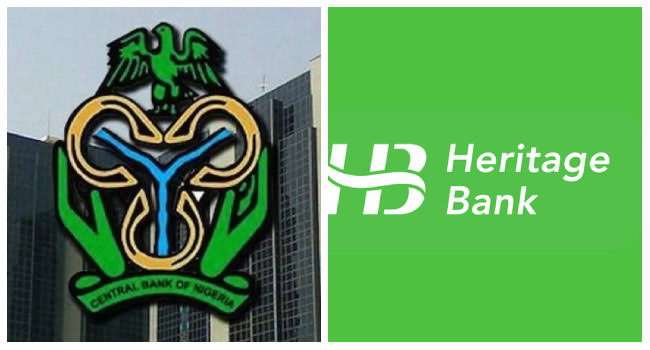● How a Few Directors Bankrupted a Once Promising Bank
Once upon a time, Heritage Bank towered as a hub of promise and prosperity. However, the bank’s glittering facade masked a festering wound of massive fraud and non-performing loans, ultimately leading to its catastrophic downfall. Despite efforts by its directors—individuals with vast influence across the corporate, business, and political circuits—Heritage Bank could not be salvaged. This is the story of how greed, mismanagement, and financial malpractice brought a titan to its knees, affecting everyone from prominent depositors to the poor and middle-class citizens who trusted the bank with their life savings.
The Legacy of SGBN: A Troubled Past
Heritage Bank’s tumultuous journey began long before its rebranding. Originally known as Societe Generale Bank Nigeria (SGBN), it was founded in the late 1970s by influential figures in Nigerian business and politics. However, the bank’s operations were marred by accusations of financial mismanagement and insider dealings. In January 2006, the Central Bank of Nigeria (CBN) closed down Societe Generale on account of its failure to meet the new minimum capital requirements of N25 billion for a national bank. Although Societe Generale successfully challenged the closure in court, the damage had been done. …CONTINUE READING
In 2012, the core investor in Heritage Bank, IEI Plc, through IEI Investments Limited, acquired the Societe Generale Bank of Nigeria license from the Central Bank of Nigeria. By December of the same year, the CBN re-issued Societe Generale’s banking license, albeit as a regional bank. This marked the birth of Heritage Banking Company Limited, which opened for business under the new name on March 4, 2013.
The Rise and Fall: A Brief Resurgence
For a brief period, Heritage Bank appeared to be on a path to redemption. The bank attracted significant investments and expanded its operations, signaling a potential turnaround. As of September 2013, the bank’s stock was publicly owned by several corporate entities and individuals, with Heritage Investment Services Limited holding an 80% stake. Despite this promising start, Heritage Bank struggled with corporate governance from the outset. It could not rise above the cult of personality that emerged as a result of its birth, leading to the very quick resignation of one of the Executive Directors who allegedly left for ‘further education.’
In October 2014, Heritage Banking Company Limited successfully acquired 100% of Enterprise Bank Limited, a nationalized financial services provider with over 160 branches and $1.6 billion in assets. This acquisition was supposed to bolster Heritage Bank’s position in the financial sector. However, internal audits soon revealed that a significant portion of the bank’s loan portfolio was riddled with non-performing loans (NPLs), many of which were extended to businesses and individuals with dubious creditworthiness. These loans were often influenced by nepotism and corruption. The recipients, most of them directors of the bank and their allies, splurged the loans obtained on the acquisition of properties abroad, expensive cars and other vanities. They all looted the bank’s coffers until things went kaput!
The Web of Deceit: Fraud and Financial Malpractice
As the NPLs began to mount, it became clear that Heritage Bank was deeply entrenched in a web of deceit. Investigations uncovered instances of fraudulent loan schemes, where bank officials colluded with borrowers to siphon funds. Fake companies were set up to receive large loans, which were then diverted for personal use or invested in unviable projects.
The bank’s management team, including its directors, were implicated in these fraudulent activities. Despite their vast influence, they failed to curb the bank’s reckless lending practices. These powerful individuals indulged in the soulless looting of depositors’ savings, diverting funds to support their lavish lifestyles and personal vanities. Meanwhile, ordinary depositors—poor and middle-class citizens—watched helplessly as their hard-earned money disappeared.
The Final Blow: Regulatory Intervention and Bankruptcy
Many customers of Heritage Bank woke up on a Monday to the shocking news of the revoked license of Heritage Bank by the Central Bank of Nigeria (CBN). The CBN cited the bank’s inability to improve its financial performance and the continued suffering with no reasonable prospects of recovery as the reasons for this drastic measure. This action reflected the CBN’s continued commitment to take all necessary steps to ensure the safety and soundness of Nigeria’s financial system.
The regulatory hammer fell as Heritage Bank’s financial health deteriorated. The Central Bank of Nigeria (CBN) launched a comprehensive investigation into the bank’s operations, uncovering widespread irregularities and governance failures. The findings were damning: Heritage Bank was insolvent, and its continued operation posed a significant risk to Nigeria’s financial system. Efforts to find a buyer or merge with a more stable institution fell through, as potential investors were deterred by the bank’s toxic assets and legal liabilities.
Following the revocation of its license, the Nigeria Deposit Insurance Corporation (NDIC) was appointed as the liquidator of the bank. According to preliminary findings, depositors’ funds amounted to approximately N650 billion, while the bank’s loans stood around N700 billion. The NDIC assured depositors that it had commenced the process of payment and would settle customers within one week, mitigating some of the damage inflicted by the bank’s collapse.
The Aftermath: A Harsh Reality for Depositors
The collapse of Heritage Bank sent shockwaves through Nigeria’s banking sector, leaving millions of depositors in despair. Prominent depositors lost vast sums, with one reportedly losing about N11 billion. The poor and middle-class depositors, who had placed their trust in the bank, found their savings wiped out. The Nigerian Deposit Insurance Corporation (NDIC) stepped in to mitigate the damage, promising to refund depositors within a week. Preliminary findings indicated that depositors’ funds amounted to approximately N650 billion, while the bank’s loans stood around N700 billion.
Lessons Learned and the Road Ahead
Heritage Bank’s story is a cautionary tale of how greed, corruption, and mismanagement can bring even the most promising institutions to ruin. It underscores the need for transparency, accountability, and robust governance in the financial sector. For Nigeria, the collapse of Heritage Bank highlights the urgent need for stricter regulatory frameworks to prevent similar occurrences in the future. The CBN has pledged to enhance its monitoring mechanisms and enforce stringent penalties for banks that flout regulations.
As Nigeria looks to rebuild trust in its banking system, the lessons from Heritage Bank’s collapse will undoubtedly shape the path forward. The bank’s downfall serves as a stark reminder that without adherence to effective risk management and corporate governance, the foundations of even the most seemingly stable institutions can quickly crumble.





This Bank when when it was named SpringBank, allowed a fraudulent insurance company under it’s name, SpringLife assurance to defraud many insurers and cashed out without any pay to insurance claims. Since 2009 to date SpringLife insurance under SpringBank vanished without a trace. Instead they changed to EnterpriseBank and finally Heritage bank where karma has finally caught up with them.
May Karma visit all of them involved from top to bottom for putting thousands of lives through hardship for refusing to pay claims till date.